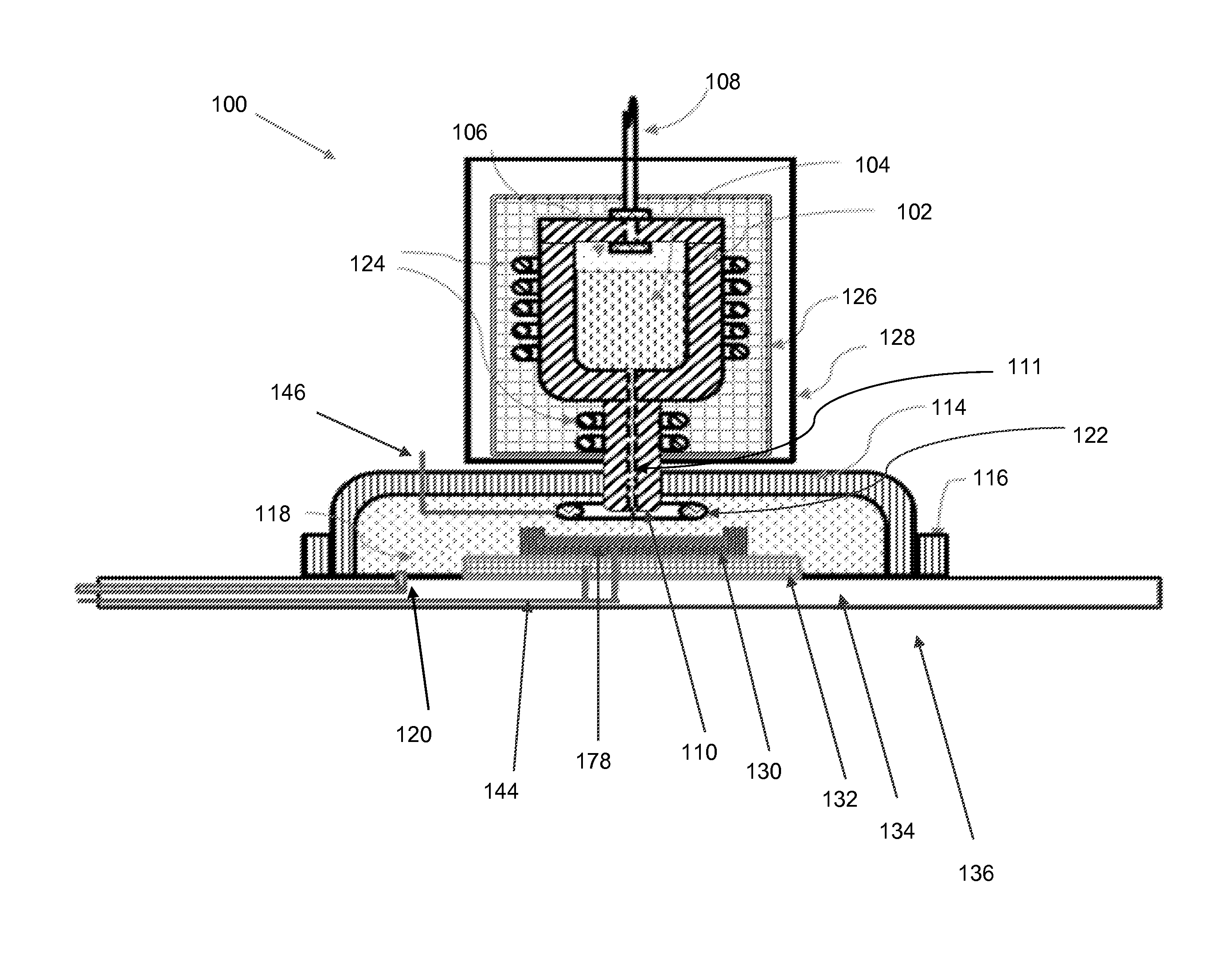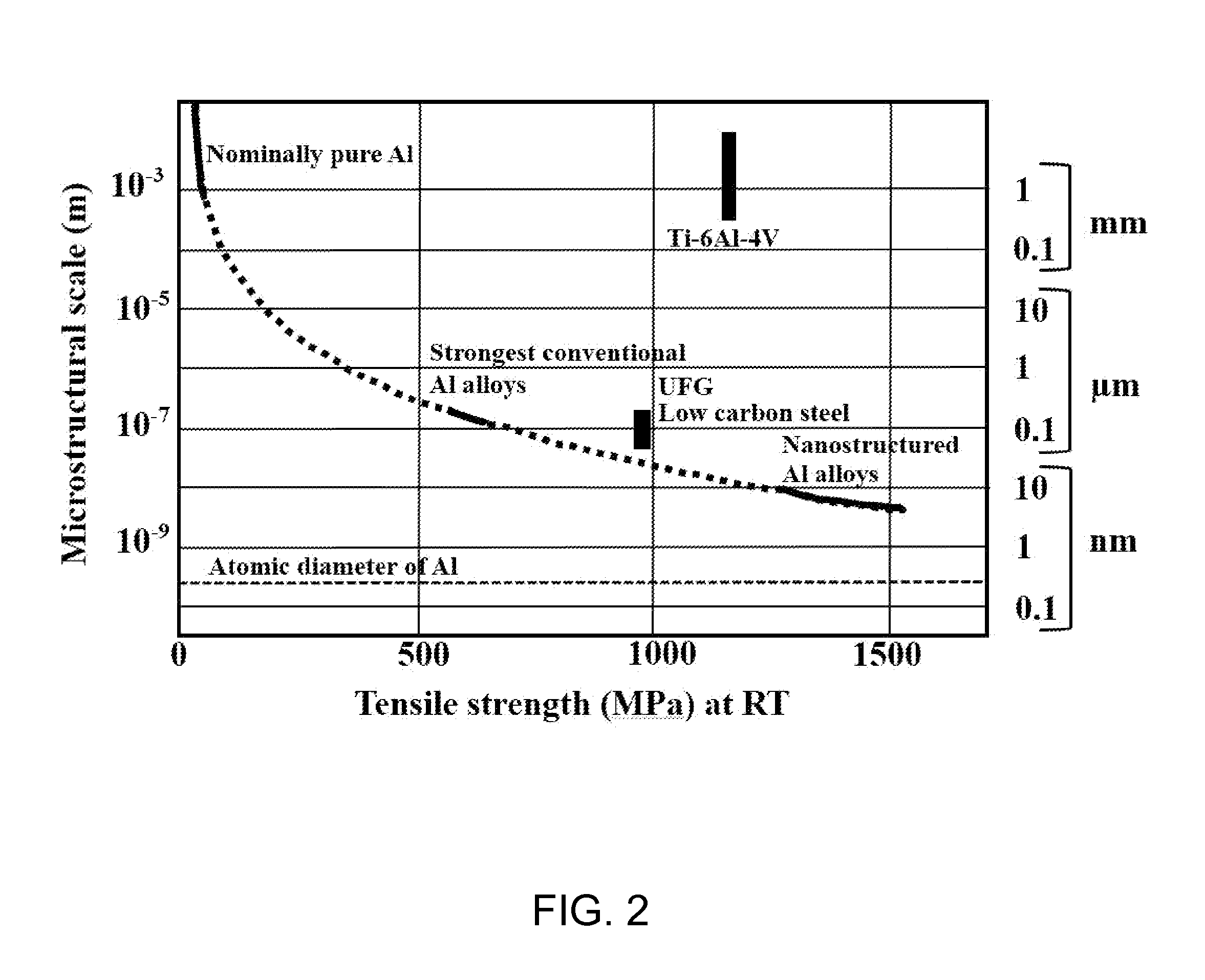Electrospray pinning of nanograined depositions
a nano-grained deposition and electrochemical technology, applied in the direction of additive manufacturing, coatings, instruments, etc., can solve the problems of loosely agglomerated nanostructured powder production, lack of control of nanostructure microstructure and morphology, and lack of a pathway to bulk nanostructured fabrication, etc., to enhance the nucleation of strengthening precipitates, enhance the inhibition of recrystallization, and attractive specific properties
- Summary
- Abstract
- Description
- Claims
- Application Information
AI Technical Summary
Benefits of technology
Problems solved by technology
Method used
Image
Examples
example 1
[0114]The apparatus and method described herein were used to create three-dimensional parts of Tungsten-Carbide / Cobalt (WC / Co). The electrospray apparatus produced 50 micron droplets composed of WC nanoparticles embedded into a melted Co matrix at 5 kV / cm driving force.
[0115]The result was that over 99% of the dense free-standing objects produced retained the nano-ceramic characteristic properties desired. An X-ray diffraction (XRD) pattern of the nanostructured WC / Co produced a B(2Θ) number that is directly related to the atomic spacing and is the true broadening of the diffraction line measured at half maximum intensity. Only the presence of a well-defined nano-crystalline phase of WC and some amount of Co were noticed. These results reveal that the nanocharacteristics were preserved during the electrospray process.
[0116]The result of the using the exemplary electrospray apparatus and methods for depositing conventional cermet formulations (the WC formulatio...
example 2
Nano-Metal Composed of Steel Deposition of Monodispersed Droplets
[0117]The apparatus and method described herein were used to create nanostructured steel. The molten precursor was incorporated into already melted compositions that were directly electrosprayed. The starting materials were nanoscale particles due to the reduction of melting temperatures associated with reduced size particles. The nanostructured steel was comprised of the same elements as conventional 314 stainless steel, well known in the literature (chromium [Cr] 25%, nickel [Ni] 20%, manganese [Mn] 2%, silicon [Si] 2%, carbon [C] 0.25%, and a balance of iron [Fe] with traces of sulfur [S] and phosphorous [P]. The difference was the addition of chromium carbide, [Cr3C2] 0.88% used as the pinning compound that was electrosprayed deposited with the same approximate final composition as conventional 314.
[0118]The nanostructured steel had an order-of-magnitude greater properties than conventional stainless steel. Convent...
PUM
| Property | Measurement | Unit |
|---|---|---|
| diameter | aaaaa | aaaaa |
| grain size | aaaaa | aaaaa |
| grain sizes | aaaaa | aaaaa |
Abstract
Description
Claims
Application Information
 Login to View More
Login to View More - R&D
- Intellectual Property
- Life Sciences
- Materials
- Tech Scout
- Unparalleled Data Quality
- Higher Quality Content
- 60% Fewer Hallucinations
Browse by: Latest US Patents, China's latest patents, Technical Efficacy Thesaurus, Application Domain, Technology Topic, Popular Technical Reports.
© 2025 PatSnap. All rights reserved.Legal|Privacy policy|Modern Slavery Act Transparency Statement|Sitemap|About US| Contact US: help@patsnap.com



